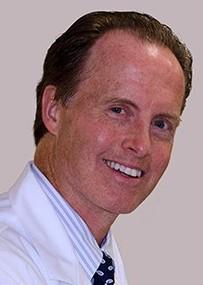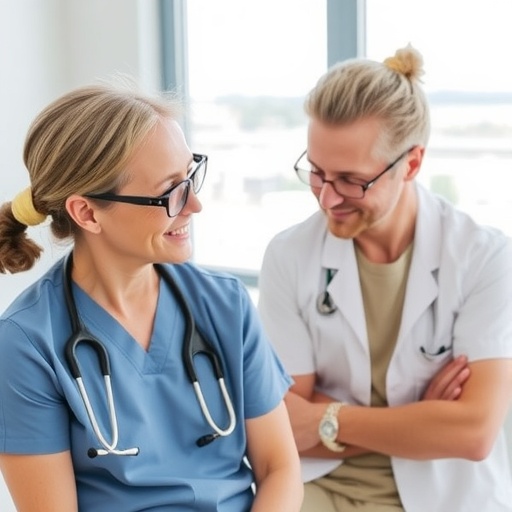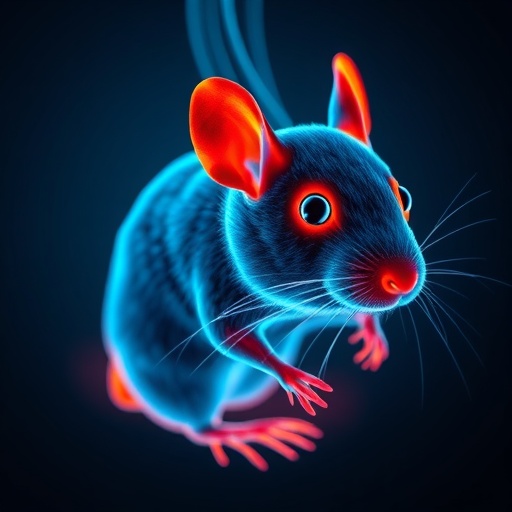
Credit: Hospital for Special Surgery
Orthopedic surgeons at Hospital for Special Surgery (HSS) performed successful microsurgery to repair damaged nerves and restore muscle strength and movement to patients experiencing paralysis from Parsonage-Turner Syndrome (PTS), according to a study published online ahead of print in The Journal of Hand Surgery.
Parsonage-Turner Syndrome affects the nerves controlling the shoulder, arm and hand. “We published data on the first successful surgical treatment in patients who experienced some degree of paralysis due to this mysterious disorder,” said Scott Wolfe, MD, director of the Center for Brachial Plexus and Traumatic Nerve Injury at HSS and lead investigator.
Also known as neuralgic amyotrophy, Parsonage-Turner Syndrome most frequently manifests as sudden, severe pain in the shoulder and upper arm, often with no known cause. The intense pain, which usually subsides within a couple of weeks, is followed by progressive weakness. Many patients find they are unable to move their affected shoulder, elbow or hand. The area and degree of paralysis depend on the nerves affected and the muscles they control.
There is no known cure, but doctors generally prescribe pain medication, steroids and physical therapy to help relieve symptoms. Although many patients eventually recover and regain function of their arm, it sometimes takes several years.
For those who do not get better, limited use of their arm or even complete paralysis can be devastating. “Imagine going for months with this condition and not knowing if or when you’re going to get better. Because recovery can take a year or longer, patients have been told to wait, and there’s this feeling of uncertainty,” says O. Kenechi Nwawka, MD, director of the Division of Ultrasound Research at HSS, who performs ultrasound in PTS patients to locate the damaged nerves. “Many patients who come to HSS feel relieved because they have found a group of specialists that really understands their condition.”
Dr. Wolfe and colleagues set out to determine if patients who weren’t improving could be helped by neurolysis, a microsurgical procedure to repair the injured nerve. The doctors hypothesized that successful surgery would allow patients with PTS to regain strength and movement.
To help patients with Parsonage-Turner Syndrome, a multidisciplinary team of specialists is essential. The first step is for a physiatrist to identify which muscles are involved and assess the nerve injury and loss of function. This is achieved through electrodiagnostic testing, which is used again at a later date to look for signs that the nerve is recovering.
It is also critical to pinpoint the exact location of the damaged nerve or nerves with MRI and ultrasound. Hospital for Special Surgery is one of few centers nationwide with the highly specialized team of hand surgeons, physiatrists and radiologists who could pursue such an undertaking.
“Without this team of experts in these varied, but related fields, we could not have made as much progress in a relatively short period of time,” said Dr. Wolfe. “It is not only the members of the team, but the spirit of collaboration among my medical and surgical colleagues at HSS that sets us apart from other institutions.”
The HSS study enrolled 24 patients with PTS, all of whom had suffered paralysis of their arm or hand. A physiatrist performed electromyography (EMG) to measure muscle and nerve function in all the patients.
“EMG testing is first used to confirm and make the definitive diagnosis of PTS,” explained physiatrist Joseph Feinberg, MD, medical director of the Center for Brachial Plexus and Traumatic Nerve Injury at HSS. “A damaged nerve will generally start to recover in six to nine months, and additional EMG testing can indicate if there are early signs of nerve regeneration. If the nerve is starting to regenerate, the patient will likely regain muscle strength, so surgery is generally not needed. However, if there is no sign of regeneration within six to nine months of PTS onset, then recovery is less likely, and surgery may be considered.”
Patients in the study met the following criteria: 12 months had passed without improvement since the onset of Parsonage-Turner Syndrome, or there was no evidence of clinical or electrodiagnostic improvement after six months as documented by three successive EMG and clinical exams.
A high-resolution MRI technique known as magnetic resonance neurography (MRN) was performed to zero in on the location of the nerve damage. Previously, radiologists at HSS had documented “hourglass-like” constrictions of the nerve, an anomaly that is unique to patients with PTS. Essentially, a band squeezing the nerve makes it look like an hourglass on the digital image. The MRI, along with high-resolution ultrasound images, is essential in surgical planning.
“Magnetic resonance neurography and ultrasound images give the surgeons a roadmap, a target to treat,” explained Darryl Sneag, MD, director, Peripheral Nerve, MRI at HSS. “Instead of having to explore the entire nerve in an arm, the images pinpoint the exact location of the constriction, so the surgeon doesn’t have to spend hours searching for it.”
Hourglass-like constrictions of affected nerves were identified in each study patient, and the images were correlated with EMG findings. Eleven out of the 24 patients opted for neurolysis surgery by Dr. Wolfe and his colleague, Steve Lee, MD.
“Once we localized the tiny constrictions in the nerve with imaging, we could confine our surgery to that site, and we could locate the lesion with millimeter precision,” said Dr. Wolfe. “Looking through a microscope with 25X magnification, we then repaired the constricted nerve by releasing the compressive bands around it.”
The mean time from PTS onset to surgery was 12.5 months. At patient follow-up of almost 15 months after the procedure, nine of the 11 patients who had surgery showed clinical improvement, having regained muscle strength and movement. EMG testing revealed significant motor unit recovery from nerve regeneration.
Out of the 13 patients who did not have surgery, only three had recovered strength during follow-up, which took place almost three years after PTS onset.
“Microsurgical neurolysis to repair the hourglass constrictions was associated with dramatic and significantly improved clinical outcomes and nerve regeneration compared to nonsurgical management,” Dr. Wolfe noted. “Therefore, we recommend considering it as a treatment option for patients with chronic Parsonage-Turner Syndrome who have failed to improve with nonoperative treatment.”
###
About HSS
HSS is the world’s leading academic medical center focused on musculoskeletal health. At its core is Hospital for Special Surgery, nationally ranked No. 1 in orthopedics (for the 11th consecutive year), No. 4 in rheumatology by U.S. News & World Report (2020-2021), and named a leader in pediatric orthopedics by U.S. News & World Report “Best Children’s Hospitals” list (2020-2021). Founded in 1863, the Hospital has the lowest complication and readmission rates in the nation for orthopedics, and among the lowest infection rates. HSS was the first in New York State to receive Magnet Recognition for Excellence in Nursing Service from the American Nurses Credentialing Center four consecutive times. The global standard total knee replacement was developed at HSS in 1969. An affiliate of Weill Cornell Medical College, HSS has a main campus in New York City and facilities in New Jersey, Connecticut and in the Long Island and Westchester County regions of New York State, as well as in Florida. In addition to patient care, HSS leads the field in research, innovation and education. The HSS Research Institute comprises 20 laboratories and 300 staff members focused on leading the advancement of musculoskeletal health through prevention of degeneration, tissue repair and tissue regeneration. The HSS Global Innovation Institute was formed in 2016 to realize the potential of new drugs, therapeutics and devices. The HSS Education Institute is a trusted leader in advancing musculoskeletal knowledge and research for physicians, nurses, allied health professionals, academic trainees, and consumers in more than 130 countries. Through HSS Global Ventures, the institution is collaborating with medical centers and other organizations to advance the quality and value of musculoskeletal care and to make world-class HSS care more widely accessible nationally and internationally. http://www.
Media Contact
Robin Frank
[email protected]
Related Journal Article
http://dx.




